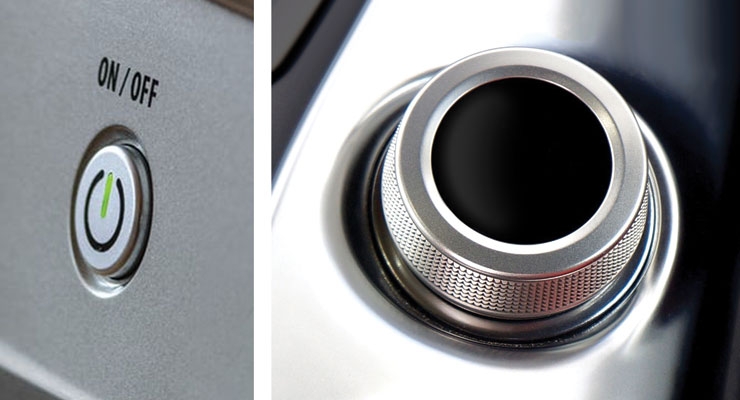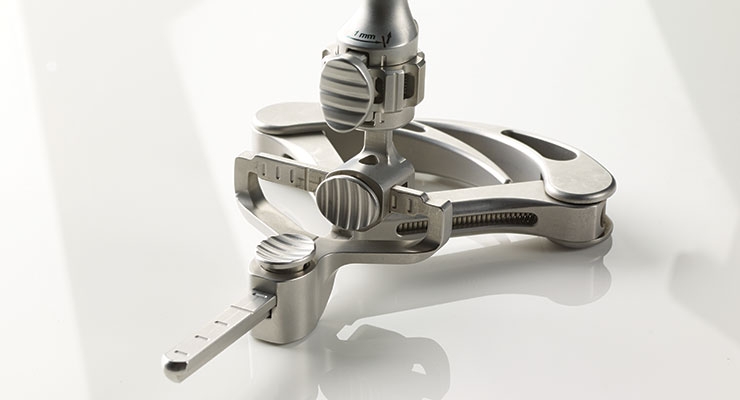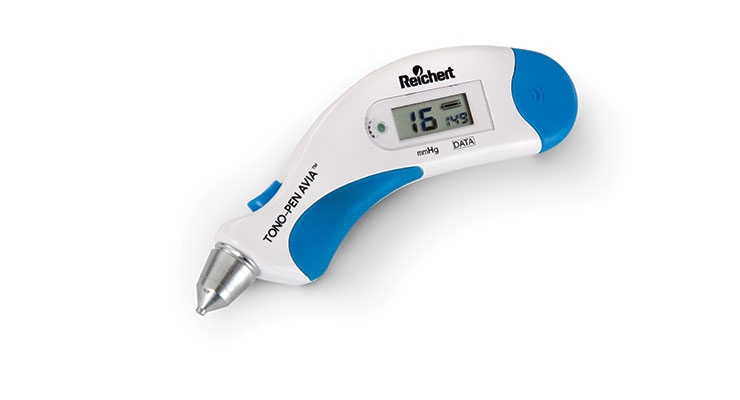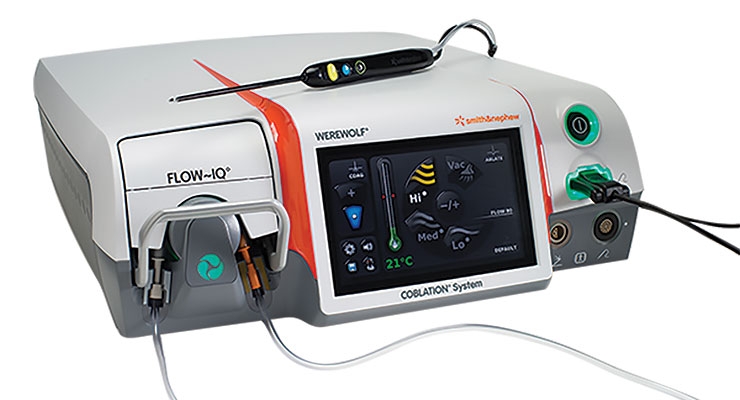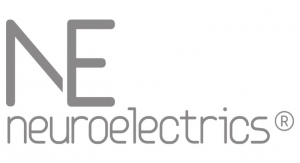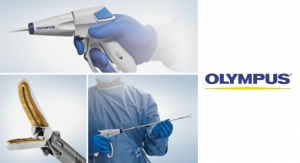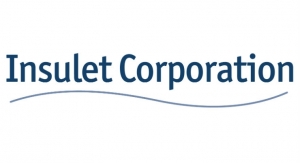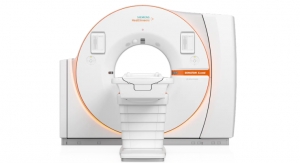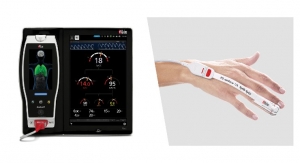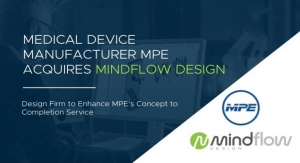Bryce G Rutter, Ph.D., Founder & CEO, Metaphase Design Group Inc.07.26.18
Good design is seamless. Bad design is snaggly, coarse, and abrasive. The common thread between good design and bad design is both stimulate a visceral response.
Good design draws the user in, shapes user behavior for the best performance, and prompts the user to interact with the product so the experience is enjoyable. Bad designs communicate confusion to the user, lack sensitivity to the user’s physical and cognitive capabilities, and provoke non-intuitive experiences with both physical and software interfaces. These disagreeable interactions all lead to user dissatisfaction, negative emotional experience with the product, and rejection of the brand in this moment of truth, as well as downstream.
In medical devices, bad design produces inefficiencies, confusion, and use errors that can lead medical professionals to inappropriately react and cause catastrophic patient outcomes. Good design in a medical device is comfortable to the medical professional, elicits usability patterns that embody the most effective way of using the product, and leaves the user with a sense of skilled accomplishment. In good medical device design, the user feels the product is a seamless extension of his/her hand.
How a user reacts to design—all design, regardless of whether it’s for a toothbrush, a sophisticated surgical system, a set of instructions, or a robotic surgical interface—is directly influenced by how the product is perceived, how the user interacts with it, and the results it affords. This usability construct is often referred to as user experience design, or UX design. What distinguishes world-class designs from bad designs is the meaningful and unambiguous emotional connection it makes with the user. The good design effortlessly performs the way the user thinks, feels, and behaves. These combine to validate the user’s decision to use the product and, ultimately, build brand loyalty.
Designing medical devices that make meaningful, emotional connections with all target users requires potent insights from research and testing. This is the primary role that formative testing plays in new product development where discrete elements of the design, such as the graphic user interface or handpiece, are tested individually and then rolled up into a comprehensive formative study that provides a final sanity check before moving forward with a summative test. Proper and complete research and testing will underpin the design of a product that creates a unique and ownable user experience that incentivizes brand loyalty.
What Is Emotional Design?
Users are consumers, so think of the best-designed product you own and how it makes you feel when you use it. The reason you love this product is it makes you feel great and using it feels natural, both physically and cognitively. It works the way you anticipate, all touch points fit your physical capabilities, and it provides meaningful feedback to shape your behavior to produce an optimal outcome. In contrast, products that quickly condemn your decision to buy don’t fit, don’t work as well as advertised, aren’t as intuitive as anticipated, or are uncomfortable or even hurt when used, were not designed to fit your body skills and capabilities.
Understanding how people think, feel, and behave is the fundamental tenet of designing medical products that are intuitive, easy-to-use, mitigate use errors, and make clinicians better at what they do.
Strong emotional connections to a well-designed product are a result of sensory inputs combined with compelling user experiences. A visually stunning product design with unambiguous aesthetic cues for interaction combined with sensory and acoustical feedback that embodies precision, control, and quality is emblematic of world-class design. When these sensory inputs stand alone, the user experience lacks emotional connection. When the aesthetic appeal stands alone, the product lacks functionality. By manipulating and uniting these key variables, designers and human factors engineers can create user experiences that build strong brand allegiance.
The DNA of Emotional Design
Because emotional design centers on multisensory user experiences, it’s important to understand which of the five human sensory capabilities—sight, sound, touch, taste, and smell—create the DNA framework of emotional design. Three senses epitomize a product’s emotional design: sight, sound, and touch.
Visual Signatures
When people talk enthusiastically about how a product looks, they are touched by its aesthetics. In medical device design, a product may possess visual beauty, but if the medical professional can’t figure out how to use it properly, or access the potency of the underlying technology, the product is profoundly unusable and inadequate. Ineffective visual signatures mask and misdirect user behaviors that, in turn, can lead to disastrous outcomes for a patient.
The visual signature of a well-designed medical device provides cues that guide and direct user behavior in the most efficient way. The product tells the user where to grab it; what to push, pull, or prod; and in what sequence to interact with it for optimal usability. In this sense, the designer is visually telling the user a story on the best way to interact with the product before the user picks it up to use. These visual cues are called affordances. Identifying those intrinsic design cues of how a user perceives a product is information that shapes and forms the user’s behavior in scale with the user’s body (Figure 1).
Humans use this fundamental response to visual cues throughout daily life. For example, when a person approaches a puddle in a parking lot, he or she knows immediately if it’s a “hop over” or “walk around” obstacle. Intrinsic to the perception of the puddle is its physical size and shape, against which the walker naturally computes leg length and physical strength and agility to reach the appropriate choice for puddle hopping or puddle avoidance.
In medical device design, affordances play a crucial role in providing visual cues that influence how a medical professional should interact with the device. For example, the visual architecture of a surgical handpiece must embody surface treatments, textures, material treatments, and color details that tell the user a straightforward story about where and how to place fingertips on the instrument for optimal precision, coordination, control, and skill. Conversely, an instrument with ineffective affordances creates uncertainty and doubt that usually results in unproductive exploration as a surgeon fumbles with the instrument in search of the best grip architecture for optimal dexterity and performance, and not commonly adopting sub optimal architectures. That hesitation effectively slows down the surgery and challenges the surgical routine.
Functional aesthetics that provide clear visual cues to the user—before touch is engaged—fundamentally guide and shape positive and meaningful emotional experiences and user behaviors.
Acoustic Signatures
How a product sounds—the sounds it makes as well as the incidental sounds of use—directly impacts the user’s perception of quality. The distinct qualities of product sound—cheap and unreliable or pitch perfect—is familiar to all users. In medical device design, a product’s acoustical signature provides meaningful feedback on system and/or instrument status.
For example, vitreoretinal surgeons rely on the sounds of the system throughout surgery as a key feedback source. While a natural tendency for an engineering and design team may be to reduce the sounds generated through surgery with sound-dampening materials, that design choice would profoundly hamper the vitreoretinal surgeon’s performance.
Acoustical signatures also include feedback that confirms and reinforces user actions, system modalities, and timestamps, to mention a few. The barrier to creating unambiguous acoustic signatures is that medical devices are commonly used in environments that have a discordant background sound. This is especially challenging in surgical theaters and critical care environments where patients are connected to a variety of control and monitoring devices, each with its own unique sound set indicating normal operation and high/low alarms. Unfortunately, there are no industry standards that would lead different manufacturers to coordinate acoustical signatures to mitigate confusion and distracting ambient noise.
Acoustic discrimination relies on not only decibel-level loudness, but also the nature and frequency of sound. Design guidelines vary depending on the age of the targeted user group. Typically, human hearing declines with age by clipping high and low frequencies and a decreasing sensitivity to decibel levels, which matters when designing products that skew toward Boomer user groups.
Haptic Signatures
Haptics is any form of interaction involving the sense of touch. The first instance of user touch reveals whether the “before touch” visual cues have led them to act in the most effective way with the product (Figure 2). Or have the visual cues misled the user into a sub-optimal ergonomic posture that brings stress, strain, decrements in ordination, control and skill, and use errors?
How a product feels to the user is the central moment of design truth. Everything will either align with or deviate from the user’s perceptions. When there is a disconnect between the information from the visual signature and the information from the haptic signature, users experience confusion, dissatisfaction, and anxiety. That disconnect often leads to increases in use errors and rejection of a brand or design.
Users’ hands provide an incredible level of tactile discrimination. A user’s fingertip can detect a bump on a sheet of glass as small as 3 µm high. For perspective, a strand of hair ranges from 80 µm to 120 µm. Hands can also detect differences as little as 0.009 inches in the palm. That gap can be the difference between a perfect fit that empowers maximum dexterity versus an oversized or undersized product that reduces coordination, control, and level of execution. With the appropriate degree of haptic detailing in surface textures and surface topology, design can communicate specific emotional messages, such as products that feel masculine versus feminine or sophisticated versus rugged.
Haptic signatures are the most complicated of the three signatures to embed into design because of all the variables that need to be assessed. Designers and human factors engineers must consider physical variability in body size, shape, and strength, as well as age. As an example, handheld instrument design must account for hands that vary in length and width, as much as 1.75 inches and 1.25 inches respectively, when comparing a 5th percentile female hand to a 95th percentile male hand. If target users skew more toward Boomers, then the impact on design of normal aging on hand function must be accommodated because age-related reductions in strength, especially for female users, and range of joint motion, dramatically decrease dexterity, coordination control, and skill, as well as perception of haptic feedback (Figure 3).
Emotional Performance
The emotion a product generates in the user directly impacts the user’s interaction and performance with the product. How a product looks, feels, and sounds influences not only user behavior but also establishes guardrails for human performance (Figure 4).
A common source of anxiety in clinical and surgical settings is the “required use” of a poorly-designed medical device that makes the user’s job more difficult than it needs to be. Systems with graphic user interfaces that are not intuitive, instructional materials that are unclear or too indecipherable, instruments that force unnatural and ineffective grip architectures that diminish surgical dexterity, or procedural guidelines that work on paper but not in practice are typical failures in design that place unnecessary stress and strain on end-users in life-saving professions.
These burdens, whether physical, cognitive, emotional, or some combination thereof, play a direct role in human performance. Bad design solutions for surgical systems, devices, disposables, services, or procedural guidelines demand more physical and cognitive work from the user than needed. Bad designs consume limited and valuable resources that diminish a clinician’s capability to perform at his or her best.
Product designs that are difficult to understand and hard to use make users frustrated, short tempered, and unwilling to conquer the intended task. There is as much merit in users feeling skilled in product use as there is in their actual level of skilled performance. The emotional impact of feeling skilled enhances a user’s patience, enthusiasm, and focus in using the product. A user’s experience not only affects them on visceral and functional levels, but also impacts their willingness to adapt and learn new and novel design solutions.
Why Emotional Design Matters
Good designs that work the way a user thinks, feels, and behaves intentionally fit the user’s body size, shape, capabilities, and accommodates all usability requirements for the task at hand. At that point, the product becomes a seamless extension of the body and allows the user to operate at peak performance. This state minimizes physical stress and strain on the user’s body, decreases unnecessary cognitive loading, and mitigates anxieties that impact safety and clinical efficacy.
Happiness is underrated in healthcare design. From the outside looking in, and in far too many cases from the inside looking out, being a healthcare practitioner is hard work, high risk, and thankless. Creating meaningful emotional connections between products and users builds brand loyalty, improves workplace morale for individuals and clinical teams, and ultimately leads to delivery of better healthcare solutions.
Emotional design in products is also critically important from a patient perspective. When patients discuss their hospital stays, it is often in the negative. They may describe them as scary, cold, sterile, and impersonal experiences. They may note that nothing around them reinforces health, happiness, or a positive state of mind. Similarly, when people describe home healthcare, they typically worry about scary procedures and impersonal regimens. For patients to be active participants in their own recovery and health, they must have confidence in their ability to master and use or self-administer a medical product. Complicated and unintuitive instructions, test kits that look like chemistry experiments, and auto injectors and blood glucose meters with ambiguous controls, settings, and feedback are all part of the bad design landscape that afflicts patients, reduces compliance, and impedes their recovery.
The most crucial emotional element expressed by patients, regardless of their health state and where they receive healthcare, is that medical devices, disposables, instructional materials, and medical environments of all types remind them of how sick they are, which in turn makes them feel emotionally unsettled and erodes their sense of self-worth.
Emotional design is a powerful tool to infuse a focus on dignity and compassion in the research and design of medical products, equipment, devices and disposables, and home care products. Emotional design provides the design-thought framework for developing products that are intuitive and easy-to-use, promote a positive healthy state of mind, and define unique and ownable user experiences that mitigate use errors and build value and brand awareness into each product, driving market share and increasing shareholder value.
Dr. Bryce Rutter is an expert in product design and usability research, human factors engineering, and ergonomic design, and is also a specialist in hand-intensive product and packaging design. His work ranges from robotic surgical systems, powered and manual instrument design, and drug delivery systems to disposables, mobile and wearable devices, and IFUs and usability and contextual inquiry research programs. As the founder and CEO of Metaphase Design Group, he defines new product categories, rejuvenates sleepy brands, and develops singular design innovations for influential global brands as well as high-profile start-ups. Dr. Rutter frequently speaks at national and international product and packaging design programs, often on design innovation. He has received more than 120 international design excellence awards and has been awarded more than 100 patents. For more information, email him at bryce@metaphase.com.
Good design draws the user in, shapes user behavior for the best performance, and prompts the user to interact with the product so the experience is enjoyable. Bad designs communicate confusion to the user, lack sensitivity to the user’s physical and cognitive capabilities, and provoke non-intuitive experiences with both physical and software interfaces. These disagreeable interactions all lead to user dissatisfaction, negative emotional experience with the product, and rejection of the brand in this moment of truth, as well as downstream.
In medical devices, bad design produces inefficiencies, confusion, and use errors that can lead medical professionals to inappropriately react and cause catastrophic patient outcomes. Good design in a medical device is comfortable to the medical professional, elicits usability patterns that embody the most effective way of using the product, and leaves the user with a sense of skilled accomplishment. In good medical device design, the user feels the product is a seamless extension of his/her hand.
How a user reacts to design—all design, regardless of whether it’s for a toothbrush, a sophisticated surgical system, a set of instructions, or a robotic surgical interface—is directly influenced by how the product is perceived, how the user interacts with it, and the results it affords. This usability construct is often referred to as user experience design, or UX design. What distinguishes world-class designs from bad designs is the meaningful and unambiguous emotional connection it makes with the user. The good design effortlessly performs the way the user thinks, feels, and behaves. These combine to validate the user’s decision to use the product and, ultimately, build brand loyalty.
Designing medical devices that make meaningful, emotional connections with all target users requires potent insights from research and testing. This is the primary role that formative testing plays in new product development where discrete elements of the design, such as the graphic user interface or handpiece, are tested individually and then rolled up into a comprehensive formative study that provides a final sanity check before moving forward with a summative test. Proper and complete research and testing will underpin the design of a product that creates a unique and ownable user experience that incentivizes brand loyalty.
What Is Emotional Design?
Users are consumers, so think of the best-designed product you own and how it makes you feel when you use it. The reason you love this product is it makes you feel great and using it feels natural, both physically and cognitively. It works the way you anticipate, all touch points fit your physical capabilities, and it provides meaningful feedback to shape your behavior to produce an optimal outcome. In contrast, products that quickly condemn your decision to buy don’t fit, don’t work as well as advertised, aren’t as intuitive as anticipated, or are uncomfortable or even hurt when used, were not designed to fit your body skills and capabilities.
Understanding how people think, feel, and behave is the fundamental tenet of designing medical products that are intuitive, easy-to-use, mitigate use errors, and make clinicians better at what they do.
Strong emotional connections to a well-designed product are a result of sensory inputs combined with compelling user experiences. A visually stunning product design with unambiguous aesthetic cues for interaction combined with sensory and acoustical feedback that embodies precision, control, and quality is emblematic of world-class design. When these sensory inputs stand alone, the user experience lacks emotional connection. When the aesthetic appeal stands alone, the product lacks functionality. By manipulating and uniting these key variables, designers and human factors engineers can create user experiences that build strong brand allegiance.
The DNA of Emotional Design
Because emotional design centers on multisensory user experiences, it’s important to understand which of the five human sensory capabilities—sight, sound, touch, taste, and smell—create the DNA framework of emotional design. Three senses epitomize a product’s emotional design: sight, sound, and touch.
Visual Signatures
When people talk enthusiastically about how a product looks, they are touched by its aesthetics. In medical device design, a product may possess visual beauty, but if the medical professional can’t figure out how to use it properly, or access the potency of the underlying technology, the product is profoundly unusable and inadequate. Ineffective visual signatures mask and misdirect user behaviors that, in turn, can lead to disastrous outcomes for a patient.
The visual signature of a well-designed medical device provides cues that guide and direct user behavior in the most efficient way. The product tells the user where to grab it; what to push, pull, or prod; and in what sequence to interact with it for optimal usability. In this sense, the designer is visually telling the user a story on the best way to interact with the product before the user picks it up to use. These visual cues are called affordances. Identifying those intrinsic design cues of how a user perceives a product is information that shapes and forms the user’s behavior in scale with the user’s body (Figure 1).
Humans use this fundamental response to visual cues throughout daily life. For example, when a person approaches a puddle in a parking lot, he or she knows immediately if it’s a “hop over” or “walk around” obstacle. Intrinsic to the perception of the puddle is its physical size and shape, against which the walker naturally computes leg length and physical strength and agility to reach the appropriate choice for puddle hopping or puddle avoidance.
In medical device design, affordances play a crucial role in providing visual cues that influence how a medical professional should interact with the device. For example, the visual architecture of a surgical handpiece must embody surface treatments, textures, material treatments, and color details that tell the user a straightforward story about where and how to place fingertips on the instrument for optimal precision, coordination, control, and skill. Conversely, an instrument with ineffective affordances creates uncertainty and doubt that usually results in unproductive exploration as a surgeon fumbles with the instrument in search of the best grip architecture for optimal dexterity and performance, and not commonly adopting sub optimal architectures. That hesitation effectively slows down the surgery and challenges the surgical routine.
Functional aesthetics that provide clear visual cues to the user—before touch is engaged—fundamentally guide and shape positive and meaningful emotional experiences and user behaviors.
Acoustic Signatures
How a product sounds—the sounds it makes as well as the incidental sounds of use—directly impacts the user’s perception of quality. The distinct qualities of product sound—cheap and unreliable or pitch perfect—is familiar to all users. In medical device design, a product’s acoustical signature provides meaningful feedback on system and/or instrument status.
For example, vitreoretinal surgeons rely on the sounds of the system throughout surgery as a key feedback source. While a natural tendency for an engineering and design team may be to reduce the sounds generated through surgery with sound-dampening materials, that design choice would profoundly hamper the vitreoretinal surgeon’s performance.
Acoustical signatures also include feedback that confirms and reinforces user actions, system modalities, and timestamps, to mention a few. The barrier to creating unambiguous acoustic signatures is that medical devices are commonly used in environments that have a discordant background sound. This is especially challenging in surgical theaters and critical care environments where patients are connected to a variety of control and monitoring devices, each with its own unique sound set indicating normal operation and high/low alarms. Unfortunately, there are no industry standards that would lead different manufacturers to coordinate acoustical signatures to mitigate confusion and distracting ambient noise.
Acoustic discrimination relies on not only decibel-level loudness, but also the nature and frequency of sound. Design guidelines vary depending on the age of the targeted user group. Typically, human hearing declines with age by clipping high and low frequencies and a decreasing sensitivity to decibel levels, which matters when designing products that skew toward Boomer user groups.
Haptic Signatures
Haptics is any form of interaction involving the sense of touch. The first instance of user touch reveals whether the “before touch” visual cues have led them to act in the most effective way with the product (Figure 2). Or have the visual cues misled the user into a sub-optimal ergonomic posture that brings stress, strain, decrements in ordination, control and skill, and use errors?
How a product feels to the user is the central moment of design truth. Everything will either align with or deviate from the user’s perceptions. When there is a disconnect between the information from the visual signature and the information from the haptic signature, users experience confusion, dissatisfaction, and anxiety. That disconnect often leads to increases in use errors and rejection of a brand or design.
Users’ hands provide an incredible level of tactile discrimination. A user’s fingertip can detect a bump on a sheet of glass as small as 3 µm high. For perspective, a strand of hair ranges from 80 µm to 120 µm. Hands can also detect differences as little as 0.009 inches in the palm. That gap can be the difference between a perfect fit that empowers maximum dexterity versus an oversized or undersized product that reduces coordination, control, and level of execution. With the appropriate degree of haptic detailing in surface textures and surface topology, design can communicate specific emotional messages, such as products that feel masculine versus feminine or sophisticated versus rugged.
Haptic signatures are the most complicated of the three signatures to embed into design because of all the variables that need to be assessed. Designers and human factors engineers must consider physical variability in body size, shape, and strength, as well as age. As an example, handheld instrument design must account for hands that vary in length and width, as much as 1.75 inches and 1.25 inches respectively, when comparing a 5th percentile female hand to a 95th percentile male hand. If target users skew more toward Boomers, then the impact on design of normal aging on hand function must be accommodated because age-related reductions in strength, especially for female users, and range of joint motion, dramatically decrease dexterity, coordination control, and skill, as well as perception of haptic feedback (Figure 3).
Emotional Performance
The emotion a product generates in the user directly impacts the user’s interaction and performance with the product. How a product looks, feels, and sounds influences not only user behavior but also establishes guardrails for human performance (Figure 4).
A common source of anxiety in clinical and surgical settings is the “required use” of a poorly-designed medical device that makes the user’s job more difficult than it needs to be. Systems with graphic user interfaces that are not intuitive, instructional materials that are unclear or too indecipherable, instruments that force unnatural and ineffective grip architectures that diminish surgical dexterity, or procedural guidelines that work on paper but not in practice are typical failures in design that place unnecessary stress and strain on end-users in life-saving professions.
These burdens, whether physical, cognitive, emotional, or some combination thereof, play a direct role in human performance. Bad design solutions for surgical systems, devices, disposables, services, or procedural guidelines demand more physical and cognitive work from the user than needed. Bad designs consume limited and valuable resources that diminish a clinician’s capability to perform at his or her best.
Product designs that are difficult to understand and hard to use make users frustrated, short tempered, and unwilling to conquer the intended task. There is as much merit in users feeling skilled in product use as there is in their actual level of skilled performance. The emotional impact of feeling skilled enhances a user’s patience, enthusiasm, and focus in using the product. A user’s experience not only affects them on visceral and functional levels, but also impacts their willingness to adapt and learn new and novel design solutions.
Why Emotional Design Matters
Good designs that work the way a user thinks, feels, and behaves intentionally fit the user’s body size, shape, capabilities, and accommodates all usability requirements for the task at hand. At that point, the product becomes a seamless extension of the body and allows the user to operate at peak performance. This state minimizes physical stress and strain on the user’s body, decreases unnecessary cognitive loading, and mitigates anxieties that impact safety and clinical efficacy.
Happiness is underrated in healthcare design. From the outside looking in, and in far too many cases from the inside looking out, being a healthcare practitioner is hard work, high risk, and thankless. Creating meaningful emotional connections between products and users builds brand loyalty, improves workplace morale for individuals and clinical teams, and ultimately leads to delivery of better healthcare solutions.
Emotional design in products is also critically important from a patient perspective. When patients discuss their hospital stays, it is often in the negative. They may describe them as scary, cold, sterile, and impersonal experiences. They may note that nothing around them reinforces health, happiness, or a positive state of mind. Similarly, when people describe home healthcare, they typically worry about scary procedures and impersonal regimens. For patients to be active participants in their own recovery and health, they must have confidence in their ability to master and use or self-administer a medical product. Complicated and unintuitive instructions, test kits that look like chemistry experiments, and auto injectors and blood glucose meters with ambiguous controls, settings, and feedback are all part of the bad design landscape that afflicts patients, reduces compliance, and impedes their recovery.
The most crucial emotional element expressed by patients, regardless of their health state and where they receive healthcare, is that medical devices, disposables, instructional materials, and medical environments of all types remind them of how sick they are, which in turn makes them feel emotionally unsettled and erodes their sense of self-worth.
Emotional design is a powerful tool to infuse a focus on dignity and compassion in the research and design of medical products, equipment, devices and disposables, and home care products. Emotional design provides the design-thought framework for developing products that are intuitive and easy-to-use, promote a positive healthy state of mind, and define unique and ownable user experiences that mitigate use errors and build value and brand awareness into each product, driving market share and increasing shareholder value.
Dr. Bryce Rutter is an expert in product design and usability research, human factors engineering, and ergonomic design, and is also a specialist in hand-intensive product and packaging design. His work ranges from robotic surgical systems, powered and manual instrument design, and drug delivery systems to disposables, mobile and wearable devices, and IFUs and usability and contextual inquiry research programs. As the founder and CEO of Metaphase Design Group, he defines new product categories, rejuvenates sleepy brands, and develops singular design innovations for influential global brands as well as high-profile start-ups. Dr. Rutter frequently speaks at national and international product and packaging design programs, often on design innovation. He has received more than 120 international design excellence awards and has been awarded more than 100 patents. For more information, email him at bryce@metaphase.com.

